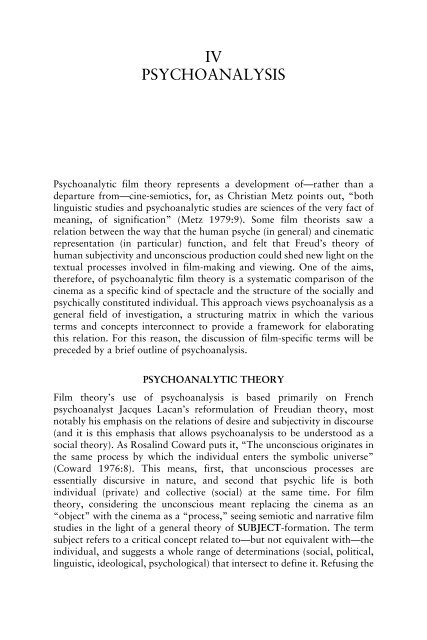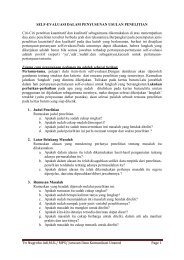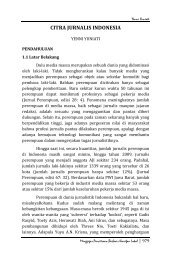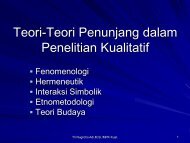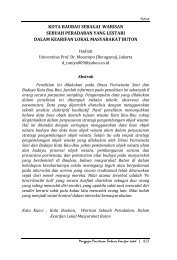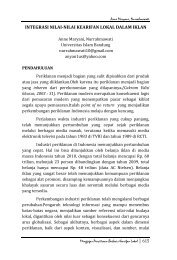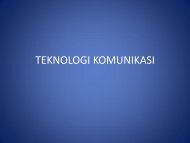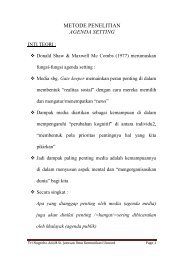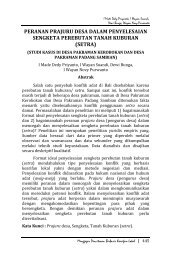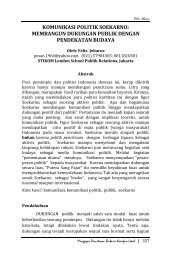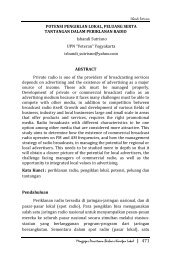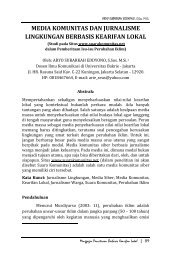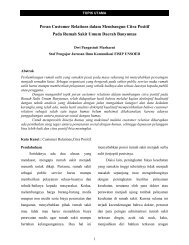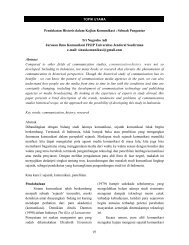New Vocabularies in Film Semiotics
New Vocabularies in Film Semiotics
New Vocabularies in Film Semiotics
You also want an ePaper? Increase the reach of your titles
YUMPU automatically turns print PDFs into web optimized ePapers that Google loves.
IV<br />
PSYCHOANALYSIS<br />
Psychoanalytic film theory represents a development of—rather than a<br />
departure from—c<strong>in</strong>e-semiotics, for, as Christian Metz po<strong>in</strong>ts out, “both<br />
l<strong>in</strong>guistic studies and psychoanalytic studies are sciences of the very fact of<br />
mean<strong>in</strong>g, of signification” (Metz 1979:9). Some film theorists saw a<br />
relation between the way that the human psyche (<strong>in</strong> general) and c<strong>in</strong>ematic<br />
representation (<strong>in</strong> particular) function, and felt that Freud’s theory of<br />
human subjectivity and unconscious production could shed new light on the<br />
textual processes <strong>in</strong>volved <strong>in</strong> film-mak<strong>in</strong>g and view<strong>in</strong>g. One of the aims,<br />
therefore, of psychoanalytic film theory is a systematic comparison of the<br />
c<strong>in</strong>ema as a specific k<strong>in</strong>d of spectacle and the structure of the socially and<br />
psychically constituted <strong>in</strong>dividual. This approach views psychoanalysis as a<br />
general field of <strong>in</strong>vestigation, a structur<strong>in</strong>g matrix <strong>in</strong> which the various<br />
terms and concepts <strong>in</strong>terconnect to provide a framework for elaborat<strong>in</strong>g<br />
this relation. For this reason, the discussion of film-specific terms will be<br />
preceded by a brief outl<strong>in</strong>e of psychoanalysis.<br />
PSYCHOANALYTIC THEORY<br />
<strong>Film</strong> theory’s use of psychoanalysis is based primarily on French<br />
psychoanalyst Jacques Lacan’s reformulation of Freudian theory, most<br />
notably his emphasis on the relations of desire and subjectivity <strong>in</strong> discourse<br />
(and it is this emphasis that allows psychoanalysis to be understood as a<br />
social theory). As Rosal<strong>in</strong>d Coward puts it, “The unconscious orig<strong>in</strong>ates <strong>in</strong><br />
the same process by which the <strong>in</strong>dividual enters the symbolic universe”<br />
(Coward 1976:8). This means, first, that unconscious processes are<br />
essentially discursive <strong>in</strong> nature, and second that psychic life is both<br />
<strong>in</strong>dividual (private) and collective (social) at the same time. For film<br />
theory, consider<strong>in</strong>g the unconscious meant replac<strong>in</strong>g the c<strong>in</strong>ema as an<br />
“object” with the c<strong>in</strong>ema as a “process,” see<strong>in</strong>g semiotic and narrative film<br />
studies <strong>in</strong> the light of a general theory of SUBJECT-formation. The term<br />
subject refers to a critical concept related to—but not equivalent with—the<br />
<strong>in</strong>dividual, and suggests a whole range of determ<strong>in</strong>ations (social, political,<br />
l<strong>in</strong>guistic, ideological, psychological) that <strong>in</strong>tersect to def<strong>in</strong>e it. Refus<strong>in</strong>g the


